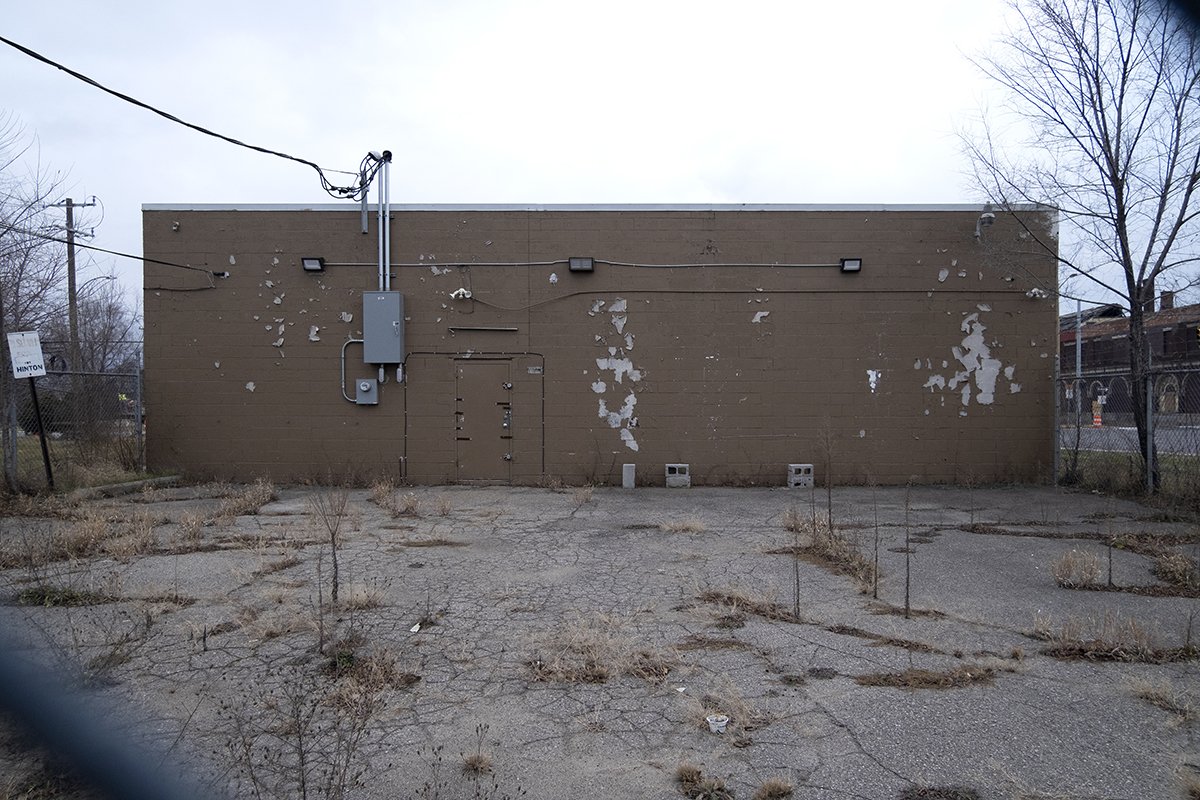7912 West Jefferson Avenue
Delray United Action Council, West Jefferson Industrial Citizens District Council, Delray Senior Center









This has to be one of the newest (and ugliest) buildings I’ve ever posted. Nonetheless, this structure played an essential role in ensuring that the neighborhood I’ve documented the most stayed afloat when everything was sinking. It might not look like it, but this structure was imperative to the people and buildings in Delray for more than three decades.
I haven’t determined what this structure was initially built for. It may have been a restaurant—but the addresses are a bit weird, so I can’t be sure. In the 1940s, the American Dental Film Company had a dental x-ray film business at the address. Later, M&M Lounge, owned by Med-hat Moglica, occupied the space. As I said, I can’t be sure if these were in the same building, but they share the same address.
In 1978, Gladys Woodard used $7,000 of her savings and a grant from New Detroit Inc. to purchase the building. She called it a “hole in the wall” on West Jefferson when later interviewed by the Detroit Free Press. She secured a federal block club grant to renovate the building. The Delray United Action Council and West Jefferson Industrial Citizens District Council, both of which Woodard was the Executive Director, moved in three years later.
The Delray United Action Council was incorporated in 1972 in a house on Cottrell. Early on, the group fought to save the Delray Community Center at 800 Cottrell (across from the former A.R.F. Zavarian Club) and worked to ensure Delray wasn’t cut off entirely from funding. By 1977, Gladys Woodard was the executive director. Their work was mainly to help seniors in the neighborhood get a hot meal, do arts and crafts, do recreational activities, and transportation. They worked with children and folks in need, too. In 2001, the building took over from McMillan School as the area’s polling location for elections. The DUAC was one of the centers of life and progress in Delray when most things in the neighborhood were crashing.
By 1997, Woodard had stepped down from her position. By this point, she was well into her 80s, so her retirement is understandable. She passed away at age 87 on December 27, 1999. She was a friend of Coleman A. Young, President of the Southwest Branch of the NAACP, lobbied for women’s issues in Lansing as a member of the Metropolitan League of Women Voters, was given the Sojourner Truth Award in 1981, and won the Metro Detroit Award of Merit in 1990. Mel Ravitz, who spent nearly 30 years on Detroit’s City Council, recalled, “Gladys has been there to be an anchor to those who’ve wanted to stay and provide hope to those who would come.”
The Delray United Action Council changed its registered address in 2016; however, the structure pictured here appears to have become vacant around 2013. It isn’t uncommon in Detroit to see a non-profit fall apart after an essential piece of the puzzle leaves. I’m not degrading anything the organization has done since Woodard’s departure—but she was a force to be reckoned with. The DUAC did great work after her passing and still exists today, but its online presence doesn’t, so it’s hard to know if they have any current programs.
At some point, the structure pictured here employed around 15 people from the Delray United Action and West Jefferson Industrial Citizens District Councils alone. The WJICDC focused on the neighborhood’s environmental issues, whereas the DUAC concentrated on those who lived there.
Today, the building is tattered but appears structurally in sound shape. To the northeast, the dilapidated remains of cement picnic tables hide in the tall grasses. The facade is frequently painted with graffiti, and a milk crate covers the light out front. The fence out back is still intact, and the parking signs from when it was still open have become faded.
If you’ve made it this far, I’m surprised. As I started with, this is probably one of the most boring structures I’ve ever posted. Because of that, its survival chances are pretty low. As the population of Delray continues to decline, there isn’t much hope for an ugly building like this without much historical significance.
However, it’s important to remember what happened here and the people who fought for Delray when nobody else would.
The address is also listed as 7914 West Jefferson.
